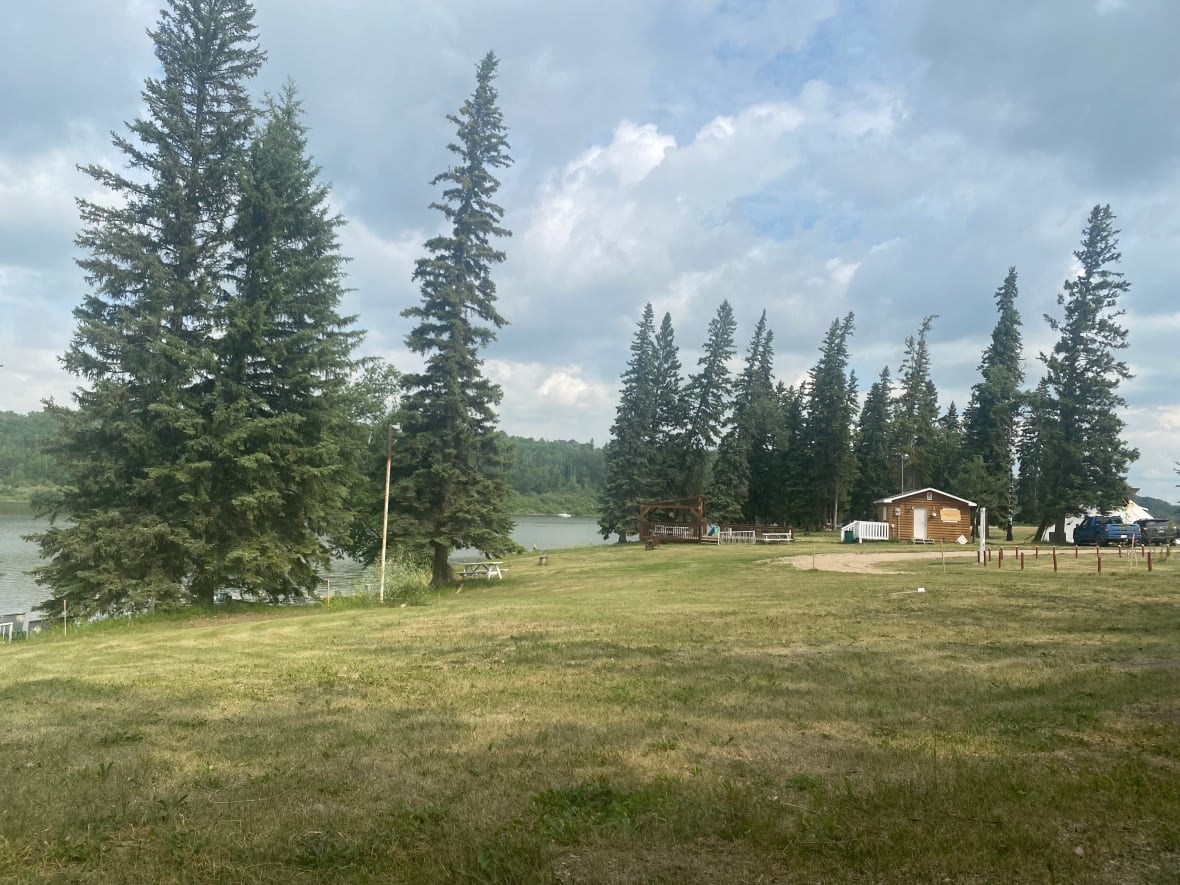'Allow the land to teach you': Sturgeon Lake First Nation turns outdoors into classroom
Community hopes to turn teachings from culture and land camps into university curriculum

CBC's virtual road trip series Land of Living Stories explores the hidden gems across Saskatchewan. Reporter Janani Whitfield hit the road to Sturgeon Lake First Nation in search of inspiring stories of community spirit. This is the first of a two-part series from that community.
Willie Ermine remembers his uncle bringing him and his brother, both young men at the time, through a trail and out into a clearing in the woods by the water of Sturgeon Lake. They stood there quietly.
"We were wondering why — why are we looking at this?" Ermine said.
Now he understands that his uncle was communicating a deeper wish for the pair to connect to the land.
"He had planted something in our mind."
Ermine, the traditional health counsellor for Sturgeon Lake First Nation, looks back to that day 45 years ago as the basis for the two brothers' work to help create cultural camps and land-based learning at the same site.
"The youth were saying, 'we don't have any connection to the elders, we want to.' And the elders are saying, 'we don't have a connection to the youth and we want to,'" he said.
"So that camping concept was the ideal context where we bring in the elders and we bring in the youth, and then just have a camp, just eat, just do ceremony, just have fun."

Ermine has been part of leading the camps for a few decades. His brother set up camping infrastructure, while Ermine teaches Indigenous knowledge, what he calls, "a people project."
On this Monday, educators with First Nations University are visiting the community to learn land-based education.
Land-based learning is not just about being outside, Ermine said. It goes much deeper, to people understanding the teachings of the land within themselves.
"The West seems to think, knowledge is in this book. It's being written; here it is," he said. "That's not true."
When people set a fire, or build a teepee, or take part in a ceremony, he wants them to understand they are connecting to the earth on a deeper, more spiritual level. Rather than seeing themselves as delivering knowledge, teachers need to understand they are students too, he said.
"Through certain protocols, through certain teachings, it allows the land to teach you."

Ermine's son, Charlz Ermine, said he's seeing the impacts of the work on younger people.
"They're more open, they're not scared to learn — they're hungry for knowledge," Charlz said, adding that knowledge is being taught on the nation all the time.
"What we've done here, it can be like an example for other communities."
Turning knowledge into curriculum
Sturgeon Lake First Nation's Sandra Gamble has spent years working as a classroom teacher on reserves and has included land-based education. This year, she's dedicated herself fully to land-based teaching.
"I get a lot of knowledge, learning from my elders and knowledge keepers," she said, noting she just recently learned how to make a cream that treats rash and eczema.
She can see the impact this kind of land-based learning has on her students. They are happier and more energetic, "more themselves," in her eyes.
"They learn and they heal from the land."

Ermine has a long history teaching with the First Nations University of Canada and sees a role for his nation in leading research based on Indigenous knowledge.
"It's happening, to turn everything — all the knowledge we gain — into a curriculum so that the generations coming up, they'll have material to work with, which we didn't have."
Rather than focus on the trauma Indigenous people have experienced from colonialism and residential schools, he wants his fellow people to understand their inherent strengths, drawn from the power of the land.
His uncle planted a seed in his mind that he sees slowly blooming among the people he works with.
"To know the spiritual nature of that land, this is what they start to experience."

